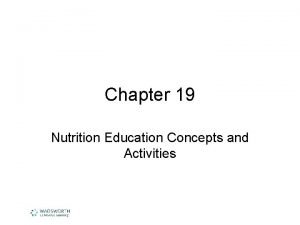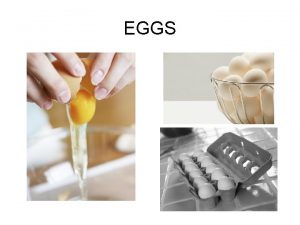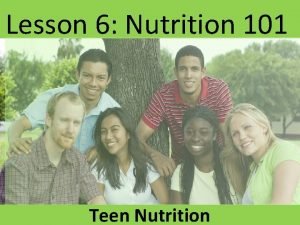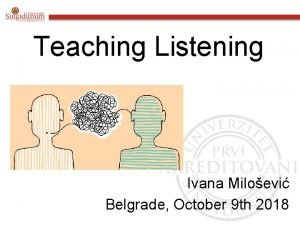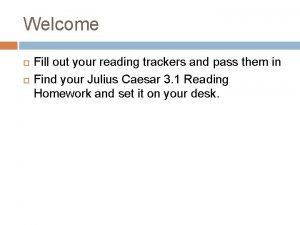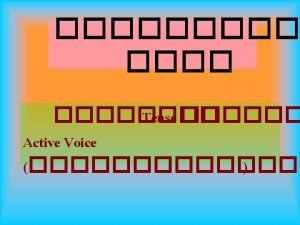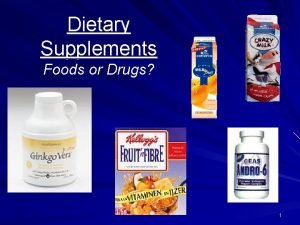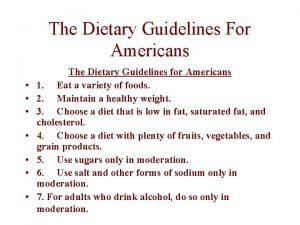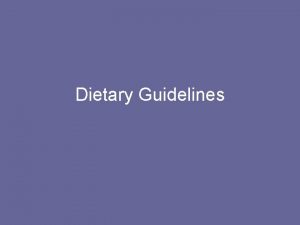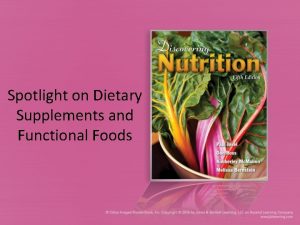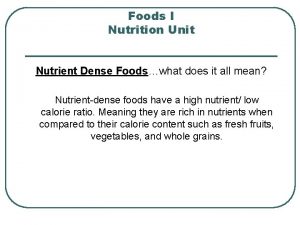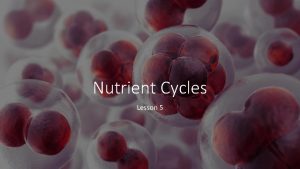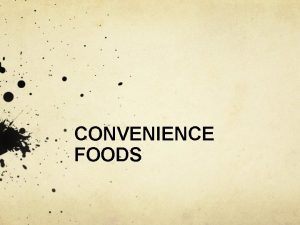The Dietary Guidelines 1 Eat Nutrient Dense Foods













- Slides: 13

The Dietary Guidelines 1. Eat Nutrient Dense Foods • What does “Nutrient Dense” mean? • • Foods that have a lot of vitamins, minerals or other important nutrients and few calories are considered nutrient dense. Choosing foods that are nutrient dense are better for your overall health. Which is more Nutrient Dense? Spinach OR Candy

2. Balance Calories to Manage Weight • • Control total calorie intake to manage body weight. Increase physical activity and reduce “screen time”. Intake Output

3. Reduce sodium, fats and added sugars, refined grains and alcohol. • Reduce sodium intake to 2, 300 milligrams per day • • • That’s only about ½ tsp. ! Too much sodium increase the risk of high blood pressure Sodium is usually added to processed foods, beverages and diet drinks

4. Increase vegetables, fruits, whole grains, milk, seafood and use oils in place of solid fats. • Choose 8 oz. of seafood products in the place of some meat and poultry per week.

5. Build healthy eating patterns that meet nutritional needs over time at an appropriate calorie level. • Building healthy habits NOW will affect you LATER!

6. Include physical exercise as part of healthy eating patterns. • 6 -17 year olds should be active at least 60 minutes or more each day

Healthy Eating Patterns “Build a Healthy Plate”

1. Balance Calories • Enjoy your food, but eat less. • Avoid oversized portions.

2. Foods to Increase: • Make half your plate fruits and vegetables. • Switch to fat-free or low-fat milk. • Make at least half your grains whole grains.

3. Foods to Reduce: • Compare sodium in foods like soup, bread and frozen meals, and choose foods with the lower numbers. • Drink water instead of sugary drinks.

Oils • Oils are not a food group, but they do provide essential nutrients. • Choose oils that provide healthy fats. Boys 9 -13 5 tsp. daily Boys 14 -18 6 tsp. daily Girls 9 -18 5 tsp. daily

Individual Caloric Needs • Each person’s caloric needs depends on age, gender and activity level. Gender & Age Daily Caloric Needs Daily Limit for Empty Calories Boys 9 -13 1, 800 160 Boys 14 -18 2, 200 265 Girls 9 -13 1, 600 120 Girls 14 -18 1, 800 160

Empty Calories • Foods that have solid fats and added sugars add calories to food, but few or no nutrients. • In some foods, like candies and sodas, ALL the calories are empty calories. • A small amount of empty calories are okay, but most people eat far more than what is healthy. Gender & Age Daily Caloric Needs Daily Limit for Empty Calories Boys 9 -13 1, 800 160 Boys 14 -18 2, 200 265 Girls 9 -13 Girls 14 -18 1, 600 1, 800 120 160
 Foods used in nutrition activities should be nutrient-dense
Foods used in nutrition activities should be nutrient-dense Nutrient broth vs nutrient agar
Nutrient broth vs nutrient agar Are eggs nutrient dense
Are eggs nutrient dense What are the 3 main layers of the earth? *
What are the 3 main layers of the earth? * The layers of earth from most dense to least dense
The layers of earth from most dense to least dense The earth's layers foldable
The earth's layers foldable Hong kong dietary guidelines
Hong kong dietary guidelines Foods basketball players should eat
Foods basketball players should eat People buy me to eat
People buy me to eat Parellel structure
Parellel structure I eat you eat he eats
I eat you eat he eats Theravada meal chant
Theravada meal chant Dietary supplements meaning
Dietary supplements meaning What is food exchange system
What is food exchange system
